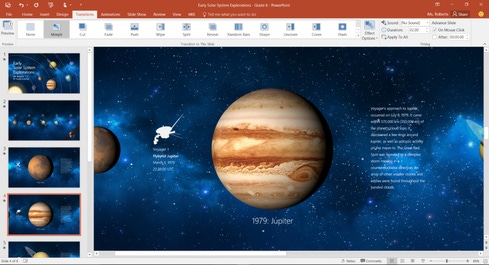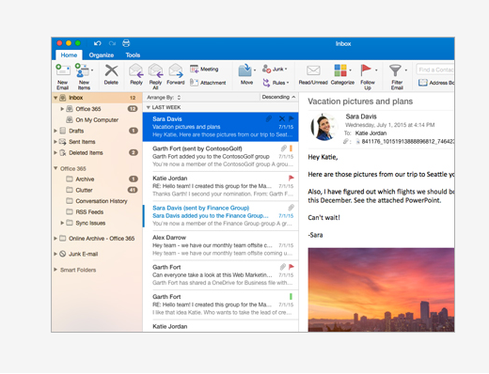With Designer and Morph, Microsoft PowerPoint users now have expanded and simplified design options to give their presentations a more polished and cinematic effect.


Office 2016: 8 Enterprise-Worthy Features
Office 2016: 8 Enterprise-Worthy Features (Click image for larger view and slideshow.)
Microsoft is bringing PowerPoint slides and presentations to a new level of sophistication with the addition of features such as a cloud-powered recommendation engine and smart animation technology.
The two new PowerPoint tools, called Morph and Designer, announced by Redmond in a Nov. 13 blog post automate the creation of slides and are designed to help users create polished slides and motion effects with a few steps.
Designer lets users create high-quality slides by dropping an image into the presentation. It then provides the user with several design ideas.
The tool, which was built in collaboration with professional graphic designers who helped develop more than 12,000 creative blueprints, will be expanded to work with additional slide types in the coming months, Microsoft said.
Designer applies cloud intelligence to analyze and identify the most compelling portion of images to determine which blueprints work best with the content.
For example, if the visual contains a natural scene, Designer can zoom, crop, and frame it. However, if the image contains a chart, it focuses in on the relevant region to ensure the important data is highlighted. Designer then selects from the more than 12,000 blueprints to provide multiple layout options to help users make the most of their image.
Morph creates cinematic motion by animating between slides, going beyond animation of regular text or images to animate 3-D shapes or be applied at a word or even character level, including text wrapping.
Users simply duplicate slides that they want morphed together, move the objects based on how they want them to animate, and click the Morph button under Transitions.
"PowerPoint Designer and Morph are new intelligent tools that work for you by automating the creation of slides and presentations, helping everyone get more out of Office," Kirk Koenigsbauer, corporate vice president for Microsoft's Office team, wrote in a blog post.
Exclusively available to Office 365 subscribers, the two features are available first in PowerPoint 2016 for Windows desktop and Windows Mobile. Microsoft said it plans to start rolling them out to other platforms in the coming months.
Microsoft also announced the launch of Office Insider, a program that allows Office 365 Home, Office 365 Personal, and Office 365 University subscribers to opt in to pre-release builds of Office 2016 for Windows and gives users access to the latest features and innovations on the platform.
Additionally, Microsoft said it is planning the launch of new capabilities and improved usability across Office 2016 for Windows, including personal finance templates in Excel; new sharing options across Word, PowerPoint, and Excel; and online video embedding in OneNote.
[ Microsoft's Surface Pro 4 is out. Should you upgrade? ]
Earlier in the week Microsoft announced a partnership with online file-sharing service Box to deliver an application for the Windows 10 operating system that will make file sharing across different Windows devices a lot easier.
The integration lets users work on Microsoft Office files directly from the app and get updates on changes with the recently updated Windows notification center.
**New deadline of Dec. 18, 2015** Be a part of the prestigious InformationWeek Elite 100! Time is running out to submit your company's application by Dec. 18, 2015. Go to our 2016 registration page: InformationWeek's Elite 100 list for 2016.
About the Author(s)
You May Also Like







